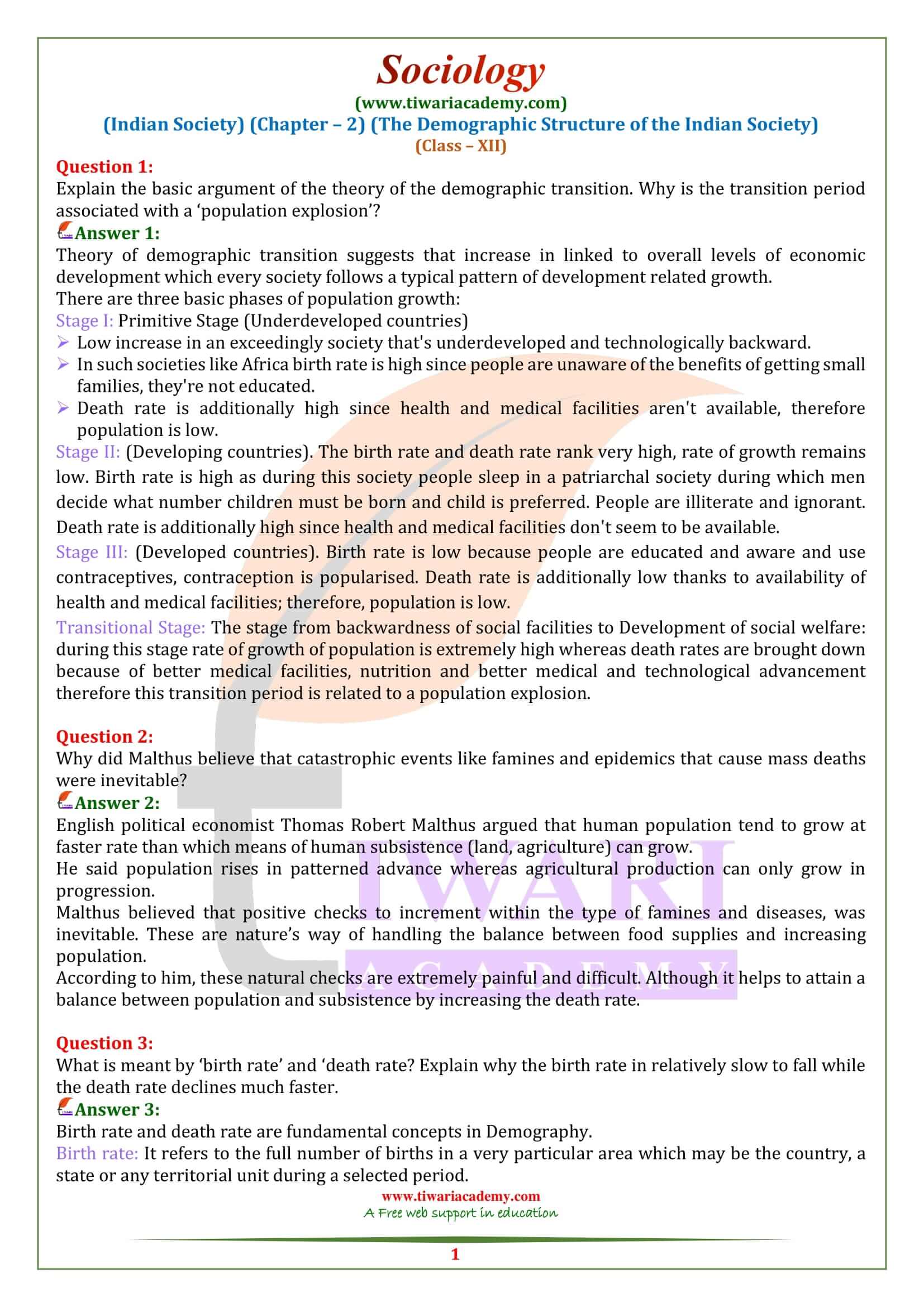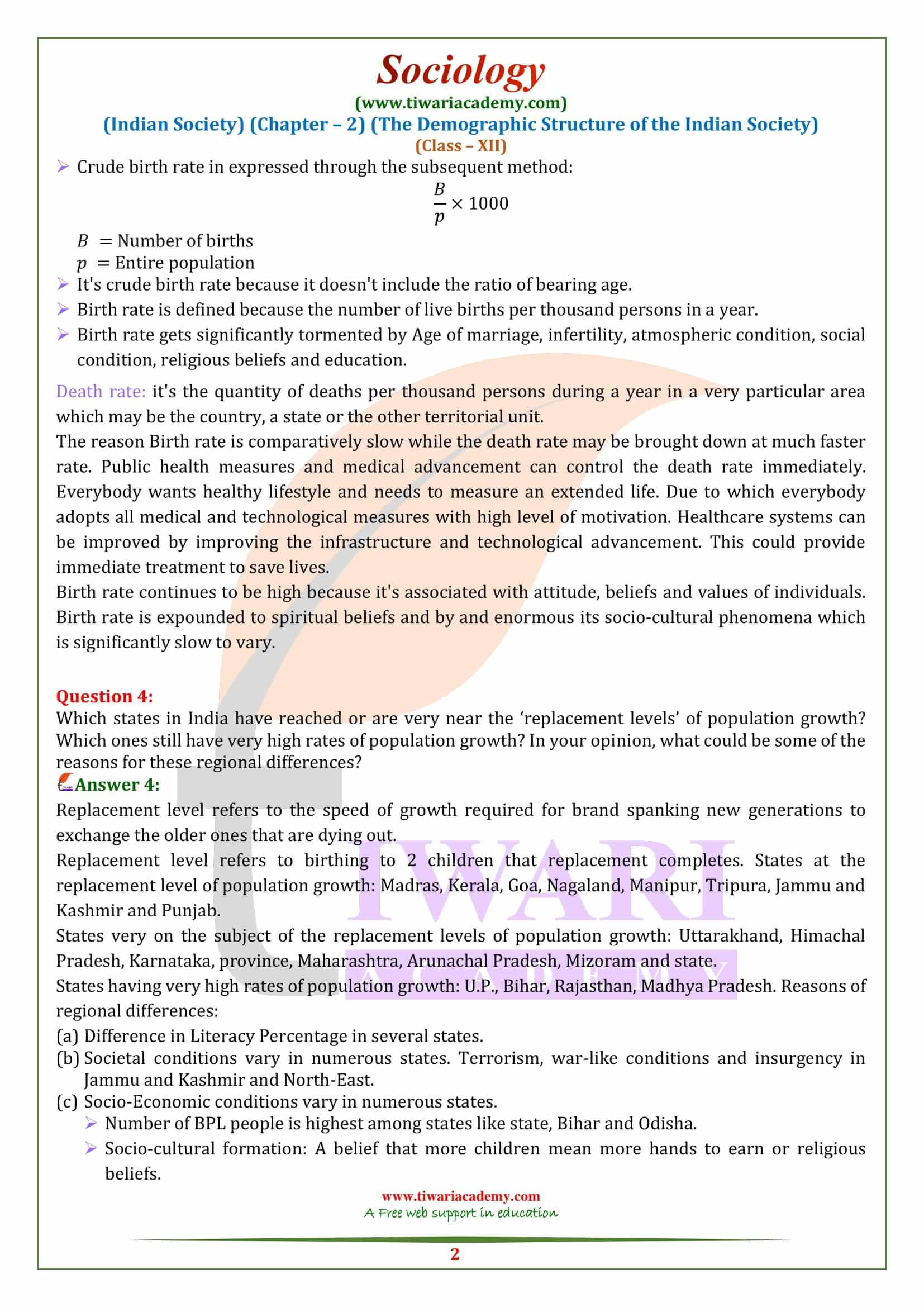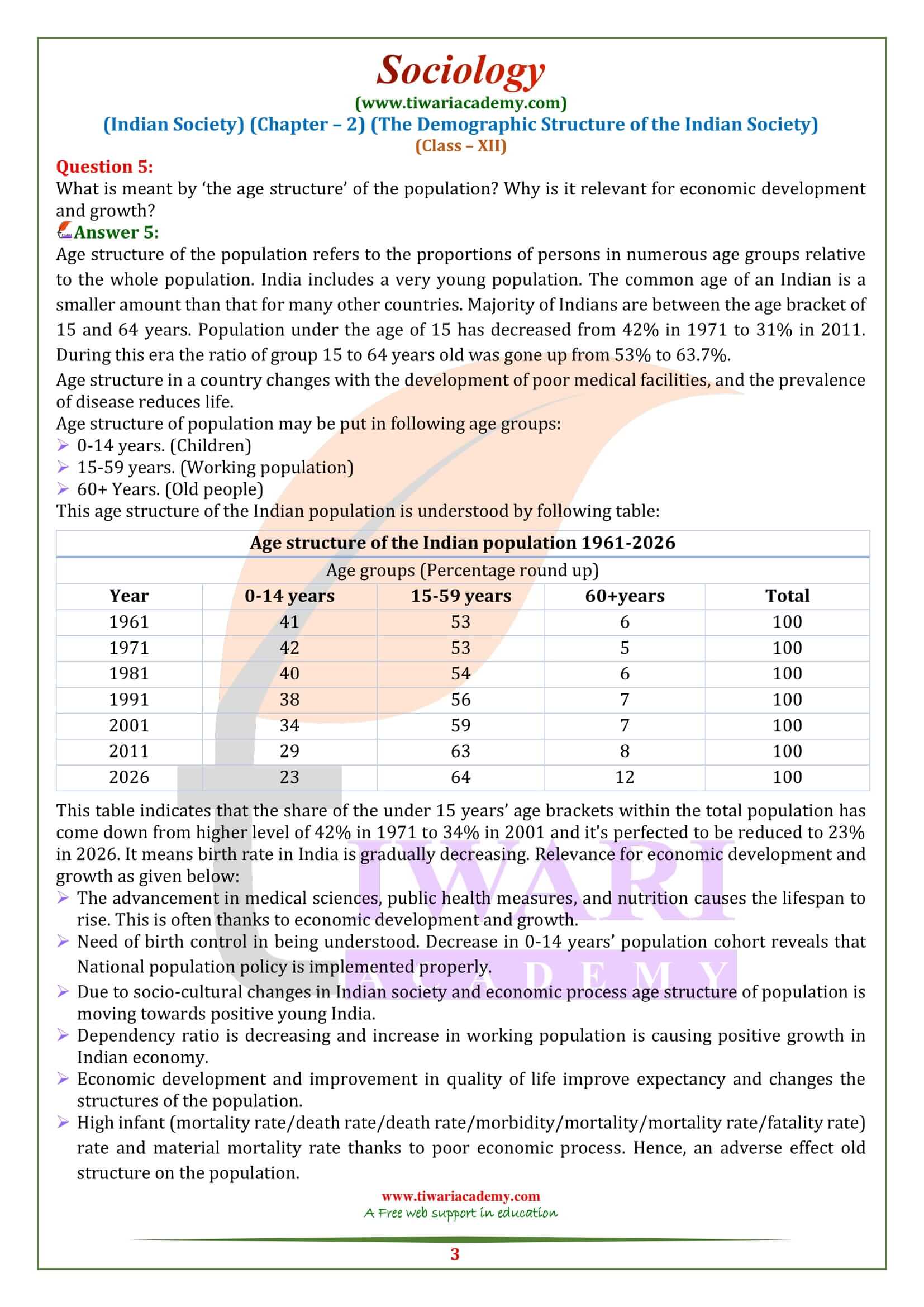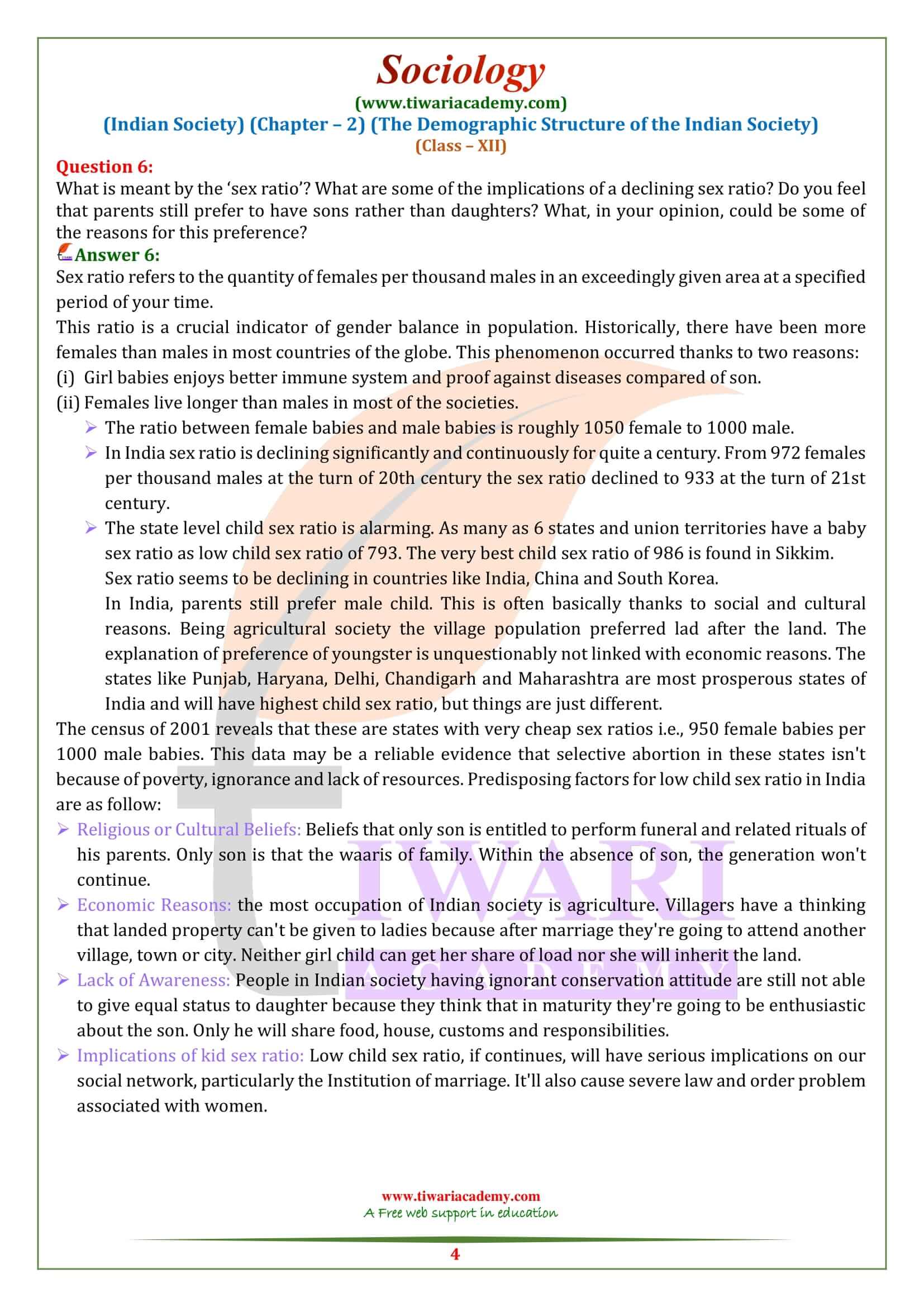NCERT Solutions for Class 12 Sociology Chapter 2 the Demographic Structure of the Indian Society in English Medium updated for session 2024-25. The class 12 students of state board and CBSE can get all the questions answers of part 1 sociology Indian Society chapter 2 here with MCQ and extra questions.
Class 12 Sociology Chapter 2 the Demographic Structure of the Indian Society Question Answers
Explain the basic argument of the theory of the demographic transition.
Theory of demographic transition suggests that increase in linked to overall levels of economic development which every society follows a typical pattern of development related growth.
Why is the transition period associated with a population explosion?
There are three basic phases of population growth:
Stage I: Primitive Stage (Underdeveloped countries)
Low increase in an exceedingly society that’s underdeveloped and technologically backward.
In such societies like Africa birth rate is high since people are unaware of the benefits of getting small families, they’re not educated.
Death rate is additionally high since health and medical facilities aren’t available, therefore population is low.
Stage II: (Developing countries)
The birth rate and death rate rank very high, rate of growth remains low. Birth rate is high as during this society people sleep in a patriarchal society during which men decide what number children must be born and child is preferred. People are illiterate and ignorant. Death rate is additionally high since health and medical facilities don’t seem to be available.
Stage III: (Developed countries)
Birth rate is low because people are educated and aware and use contraceptives, contraception is popularised. Death rate is additionally low thanks to availability of health and medical facilities; therefore, population is low.
Transitional Stage
The stage from backwardness of social facilities to Development of social welfare: during this stage rate of growth of population is extremely high whereas death rates are brought down because of better medical facilities, nutrition and better medical and technological advancement therefore this transition period is related to a population explosion.
Why did Malthus believe that catastrophic events like famines and epidemics that cause mass deaths were inevitable?
English political economist Thomas Robert Malthus argued that human population tend to grow at faster rate than which means of human subsistence (land, agriculture) can grow.
He said population rises in patterned advance whereas agricultural production can only grow in progression.
Malthus believed that positive checks to increment within the type of famines and diseases, was inevitable. These are nature’s way of handling the balance between food supplies and increasing population.
According to him, these natural checks are extremely painful and difficult. Although it helps to attain a balance between population and subsistence by increasing the death rate.
Explain why the birth rate in relatively slow to fall while the death rate declines much faster?
The reason Birth rate is comparatively slow while the death rate may be brought down at much faster rate. Public health measures and medical advancement can control the death rate immediately. Everybody wants healthy lifestyle and needs to measure an extended life. Due to which everybody adopts all medical and technological measures with high level of motivation. Healthcare systems can be improved by improving the infrastructure and technological advancement. This could provide immediate treatment to save lives.
Birth rate continues to be high because it’s associated with attitude, beliefs and values of individuals. Birth rate is expounded to spiritual beliefs and by and enormous its socio-cultural phenomena which is significantly slow to vary.
What is meant by the age structure of the population?
Age structure of the population refers to the proportions of persons in numerous age groups relative to the whole population. India includes a very young population. The common age of an Indian is a smaller amount than that for many other countries. Majority of Indians are between the age bracket of 15 and 64 years. Population under the age of 15 has decreased from 42% in 1971 to 31% in 2011. During this era the ratio of group 15 to 64 years old was gone up from 53% to 63.7%.
Which is the most important question of chapter 2 in sociology class 12?
Malthusian theory of population is perhaps the most important question for class 12 and even for competitive exams.
How is the study of demography in chapter 2 of sociology relevant to economics?
By studying demographic patterns, planners can frame suitable economic policies particularly in the field of health and infrastructure, employment and eradication of poverty. So, we can say that the chapter 2 class 2 sociology is also related to economic terms or concepts.
What are the important terms used in chapter 2 of class 12 sociology?
The demographic transition theory, infant mortality rate, dependency ratio, Life expectancy, maternal mortality rate, the ratio of men and women/ Sex ratio and age structure are some important terms to be learnt.






